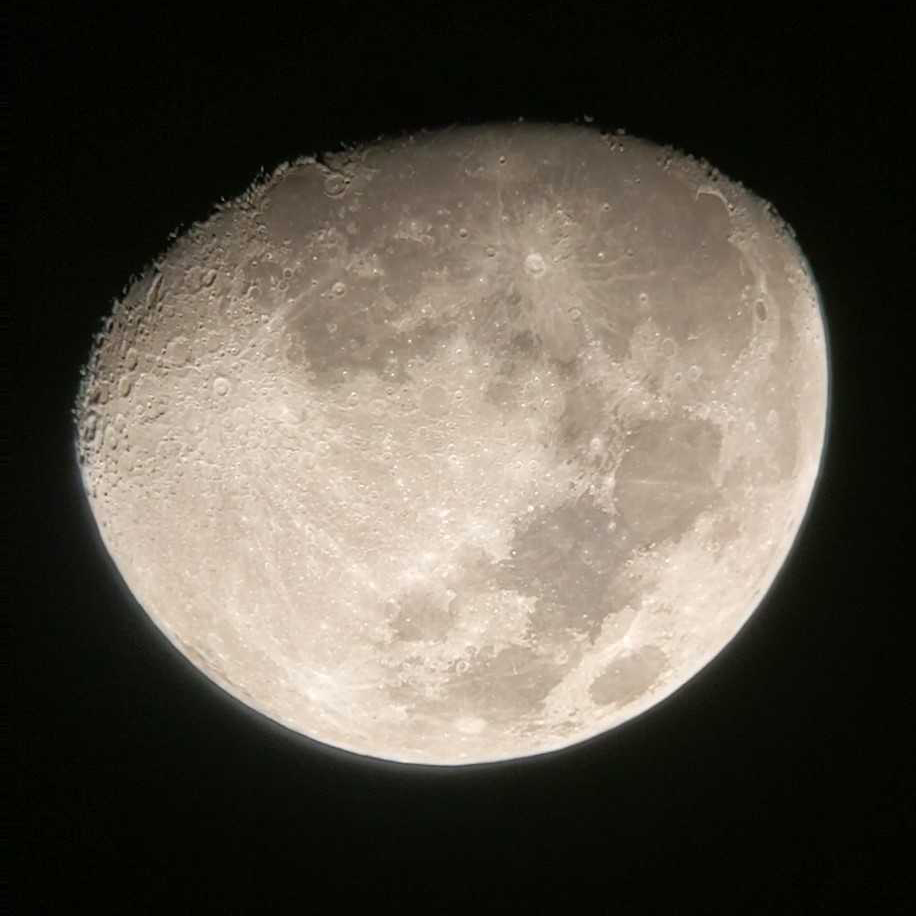What Is A Blue Moon?

Header Image: Astrophotography picture of the Moon. Image Credit: Nick Lake
What, exactly, is a blue moon, and how rare is it? This question seems like it should have a straightforward answer, but as with all things related to language, it’s complicated.
Absurd, Impossible, or Rare?
The phrase blue moon has been around for several hundred years. It was originally a phrase that meant something was nonsensical or completely absurd, like up is down and left is right: “Don’t listen to her. Why not? Because she would say the Moon is blue.” Then, it came to mean something that will not happen: “I’ll eat boiled brussels sprouts when the Moon turns blue.” Today, we generally use the phrase to mean something that doesn’t happen very often: “That mauve paint color is popular only once in a blue moon.” Anyone who lived through the 1980s knows exactly which paint color I am talking about.
Is ‘Blue Moon’ a Real Term In Astronomy?
Yes! The 19th century definition from the Maine Farmer’s Almanac states that a blue Moon is the third full Moon in a season that has four full Moons, sometimes called a “seasonal” blue Moon. Astronomical seasons—from equinox to solstice, or solstice to equinox—usually have three full Moons, but occasionally, there will be four because of the way the Moon phases line up with our solar-based calendar. According to this definition, the most recent blue Moon occurred on August 22, 2021, and the next one is August 19, 2024.
But there is a more common definition that comes from a mistake by a Sky and Telescope magazine author in an article published in March 1946. The article stated that a blue Moon is the second full Moon in a calendar month, sometimes called a “monthly” blue Moon. This one is also a quirk of our calendar! Our calendar is based on the Sun, and each calendar month has 28, 29, 30, or 31 days in it. The Moon takes 29.5 days to go around the Earth, so sometimes a calendar month is long enough for a Full Moon to happen right at the beginning and then again at the end of the month. Defined this way, the most recent monthly blue Moon occurred on October 31, 2020, and the next will fall on August 31, 2023. Occasionally—every 19 years—you can even have zero Full Moons in a calendar month! February 2037, we’re looking at you! In the year 2037, we will witness two monthly blue Moons in January and March.
When is the Next Blue Moon?
The next monthly blue moon will occur on August 30, 2023 and the next seasonal blue Moon will occur on August 19, 2024!
What Color Is A Blue Moon?
Sometimes people wonder if a blue Moon actually looks blue. Normally, no, but under specific atmospheric conditions, it can. These conditions can occur during any Moon phase, not just a Full Moon. After the 1883 eruption of Krakatau—the volcano also known as Krakatoa—in Indonesia, the enormous amount of dust and ash that was spread around the world filtered out some of the wavelengths of sunlight, and made the Moon appear to be tinged blue. Sometimes dust in the air or smoke particles from forest fires can also cause the Moon’s light to be filtered in a specific way, and thus the Moon can appear to have a blue tint to it. But, for the most part, the Moon appears light grayish.
Learn From Our Astronomy Educators
Watch exclusive live episodes of Sky Observers Hangout throughout the year! Learn how to observe upcoming cosmic happenings, enhance your astrophotography skills and see celestial objects through a telescope virtually with our astronomy educators. Learn tips on observing Earth’s moon and getting better images of the Moon using your smartphone in the recap of this episode.
The Space Comedy Show You Need Right Now
We’ll never get tired of looking up at the Moon. We’ll also never get tired of making space jokes. Cause, you know, space rocks. This episode of our space comedy show—Wow! Signal—has it all: a werewolf asking anyone under the Sun if the Moon makes fur babies, a totality (see what we did there) stellar chip commercial, the best doggo named Luna, and a song all about what it would be like if the Moon suddenly…left us!? Watch it now and let us know in the comments if you will be singing “Without You, Moon” or “A Song About Luna” every time you look up at our rocky friend.






